Neolith, the Official Partner for the Object INDE.Award, teaches us a lesson or two about the importance of forward-thinking design to battle throwaway culture.

In today’s consumer age, it’s easy to get swept up in the excitement of the new. However, what we often fail to remember is that ensuring constant newness and novelty comes at a price that extends beyond what we pay. Many of the things that we deem to be necessary – mobile phones, for instance – utilise limited resources for their production.
The unsustainable nature of our consumption, dubbed a “throw-away society”, has only increased since the term was originally coined by Life magazine in 1955. Where we used to seek to repair, improvise and mend, the typical response to a broken item now is to dispose of it and replace it with something new.
Part of this responsibility lies with the companies that produce these materials, encouraging the throwaway culture by introducing new products more often than necessary, such as with many electronics, or by planned obsolescence. With both methods, one could expect company profits to rise. One of the most famous instances, and likely the original instance of the planned obsolescence, is the story of the Phoebus cartel.
In 1924 some of the largest manufacturers of light bulbs gathered in Geneva, agreeing to artificially reduce the longevity of light bulbs to 1000 hours – between 500-1000 less than what was common for the day. In doing so, they could more reliably expect a certain number of sales each year.
Of course, our understanding of the planet and its limited resources is much greater today than in the first half of the 20th century. However, as with many developed nations, consumerism is still very much a part of how we live.
Architecture, despite being something that one would assume is typically intended to last, is not always immune to this. While no one is going out to purchase new dining room chairs every other year, cheaper manufacturing and minimal research and development going into a product can lead to a reduction in life expectancy.
Neolith, designed by CDK Stone, was developed with the intention in mind to counteract the widespread appeal of throwaway culture. Engineered to be resistant to a number of the common stressors, such as high temperatures, UV rays, scratches and the wear associated with heavy traffic, Neolith is suitable for every purpose from kitchen countertop to commercial flooring. Offering further resistance to chemical cleaning agents, Neolith is also easy to clean and is completely suitable for food contact and preparation.
Known worldwide for its incredible durability and user-friendly larger format (the large sheets sizes are 3200 x 1500 x 12mm), Neolith reduces the amount of wastage and joint lines. In situ, however, home-owners, bar-owners (in fact – the entire hospitality industry!) can’t get enough of Neolith and its scratch-, heat- and stain-resistant properties that allows benchtops to stand the test of time.
Neolith, a brand of all-natural, premium sintered compact surfaces for kitchen and bathroom worktops, flooring, interior wall cladding applications and exterior facades. Neolith provides architects and designers with a comprehensive offering of on-trend designs combined with the inherent strength of sintered compact surfaces.
It has near-zero porosity, making the product hygienic, stain resistant, easy to clean and impervious to chemicals. The product is also wear, scratch, heat resistant and its colours, being natural base, do not vary when exposed to UV rays. Additionally, the product is lightweight and easy to install, making Neolith suitable for virtually every indoor and outdoor surface.
With a 10-year warranty and a number of thicknesses and timeless styles available, you can have peace of mind that you won’t need (or want) to replace your Neolith surfaces when the novelty wears off.
INDESIGN is on instagram
Follow @indesignlive
A searchable and comprehensive guide for specifying leading products and their suppliers
Keep up to date with the latest and greatest from our industry BFF's!
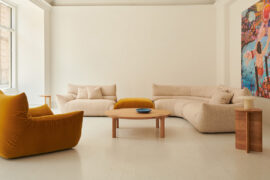
A curated exhibition in Frederiksstaden captures the spirit of Australian design

A longstanding partnership turns a historic city into a hub for emerging talent
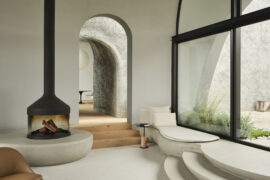
Leeton Pointon Architects and Allison Pye Interiors have been awarded as the winner of The Living Space at the INDE.Awards 2025 for their exceptional project House on a Hill. A refined and resilient multigenerational home, it exemplifies the balance of architecture, interior design and landscape in creating spaces of sanctuary and connection.
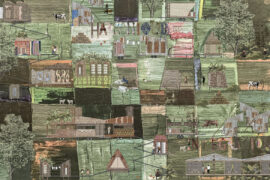
Annabelle Smith has been named winner of The Graduate at the INDE.Awards 2025, in partnership with Colorbond. Her visionary project reimagines housing in Aotearoa, proposing a modular and culturally responsive model uniting people, architecture and nature.
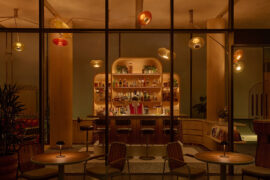
The Standard, Singapore by Ministry of Design has been crowned winner of The Social Space at the INDE.Awards 2025. Redefining hospitality with a lush and immersive experience, The Standard celebrates both community and connection.

The INDE.Awards 2025 has named House on a Hill by Leeton Pointon Architects and Allison Pye Interiors as the winner of The Interior Space category, presented by Tongue & Groove. This multigenerational country home on Bunurong Country redefines residential architecture and design with its poetic balance of form, function, and sanctuary.
The internet never sleeps! Here's the stuff you might have missed
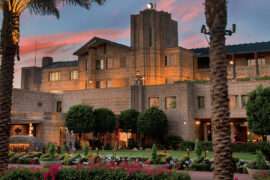
Sub-Zero Wolf Kitchen Design Contest (KDC) announces the remarkable Arizona Biltmore as the location of the 2026 Gala Venue and Winners’ Summit
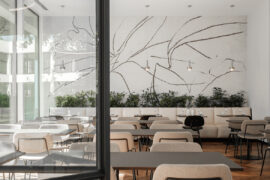
Hospitality is evolving fast, demanding interiors that can flex as quickly as guest expectations. From modular seating to stackable silhouettes, Bowermans brings global design brands and local know-how to help designers shape spaces that perform as well as they inspire.

Karndean’s newly evolved Opus range brings versatility and durability to the forefront of commercial flooring. Blending design-led aesthetics with robust, high-performance functionality, it’s a go-to solution for spaces that demand both style and resilience.